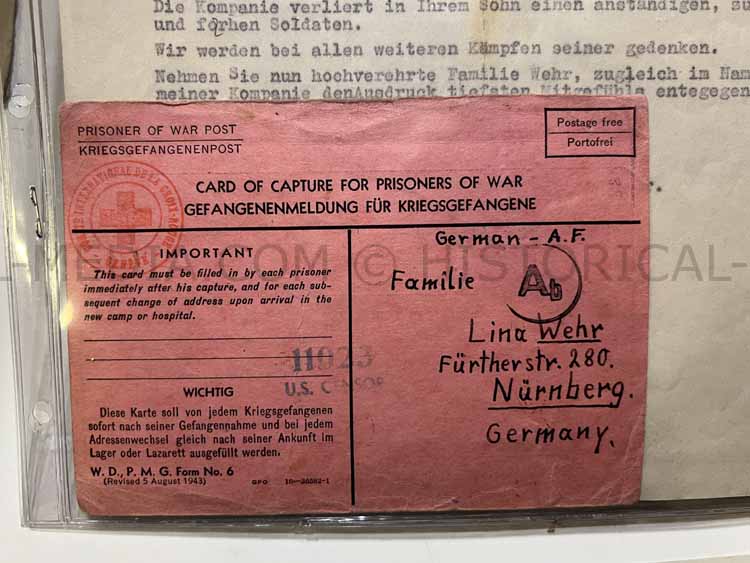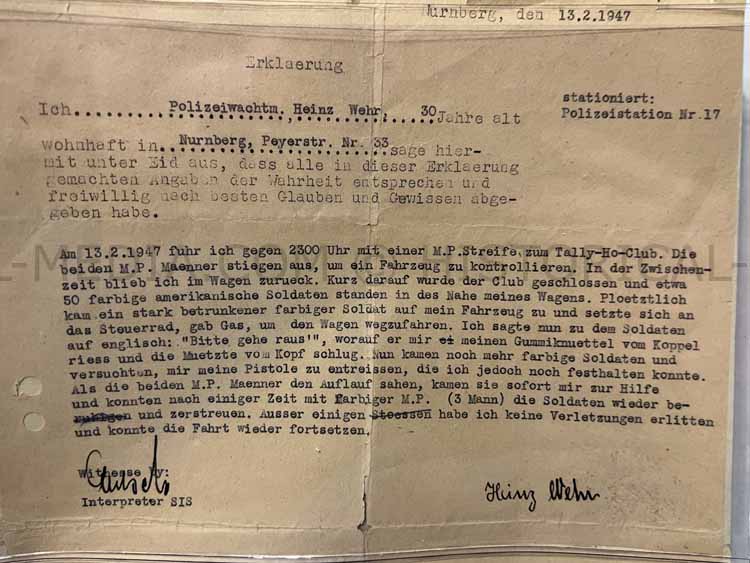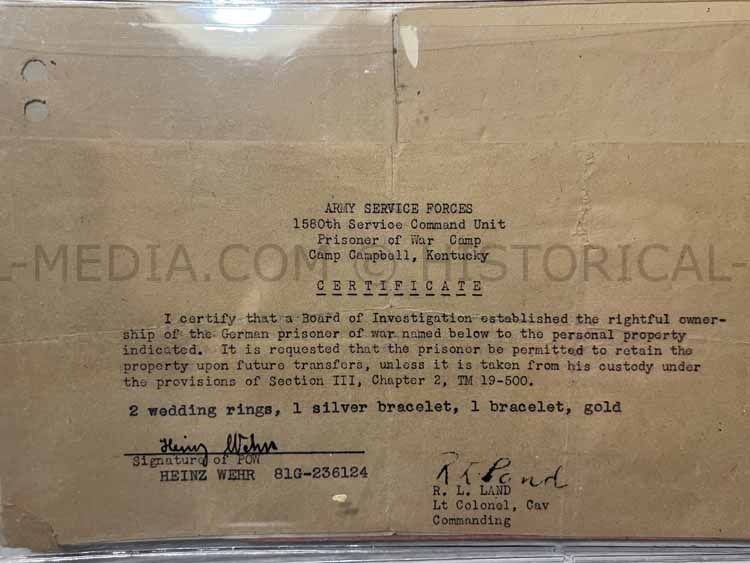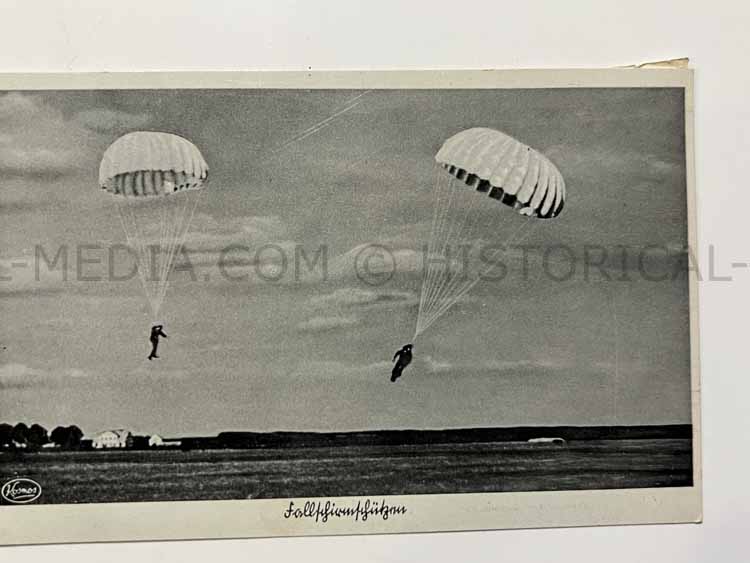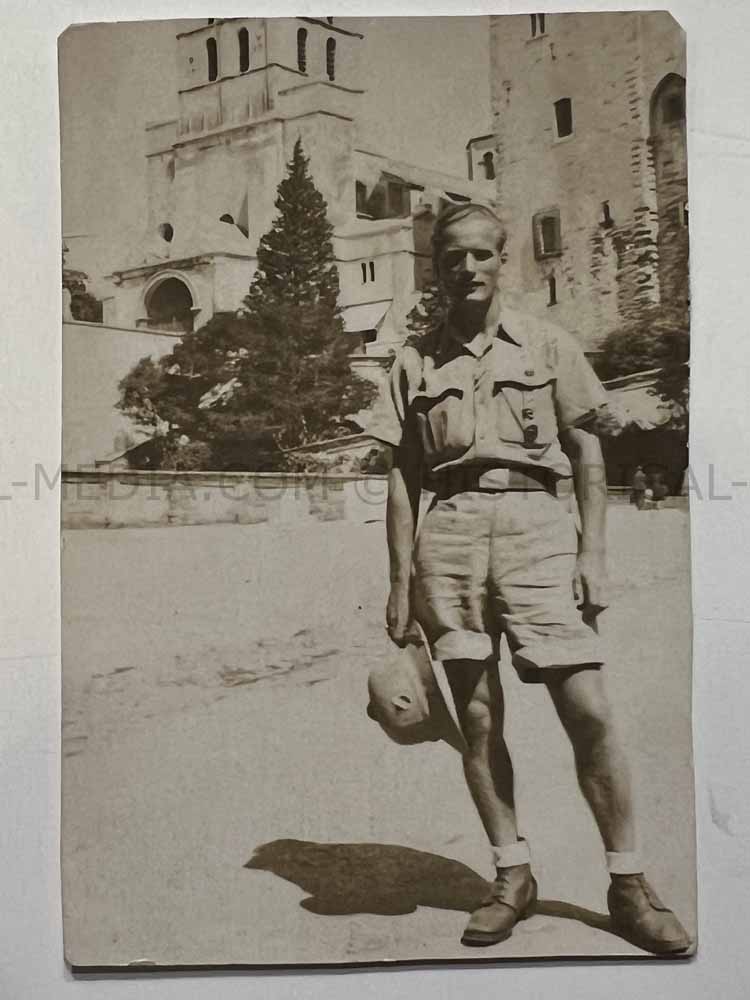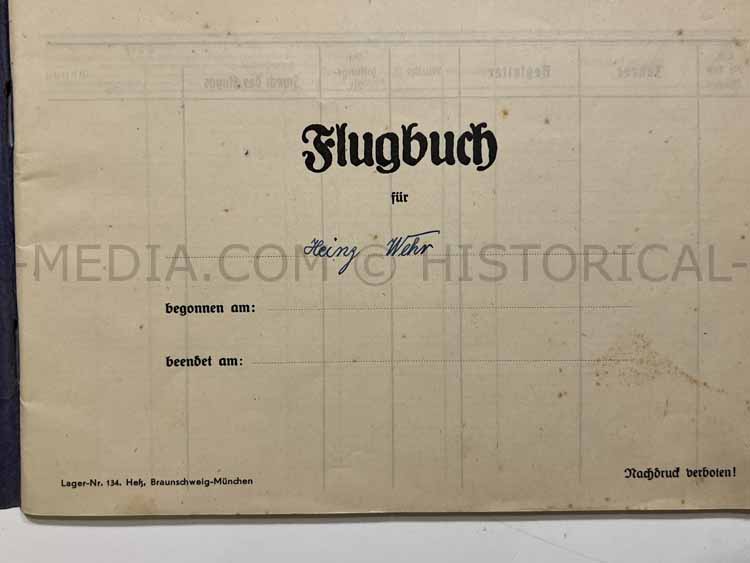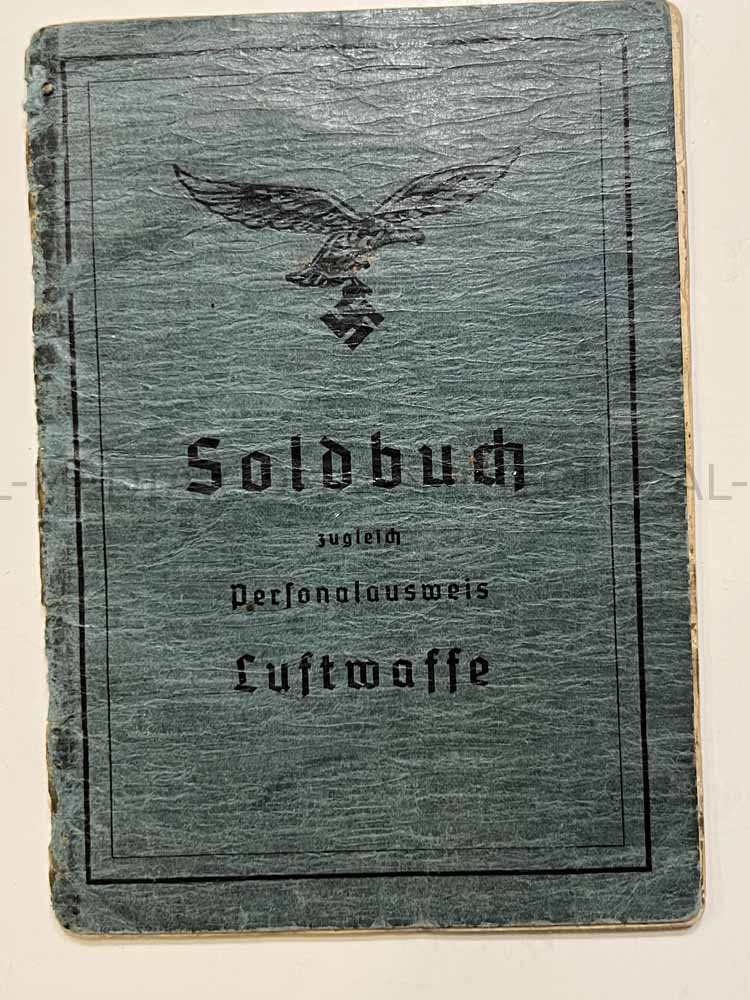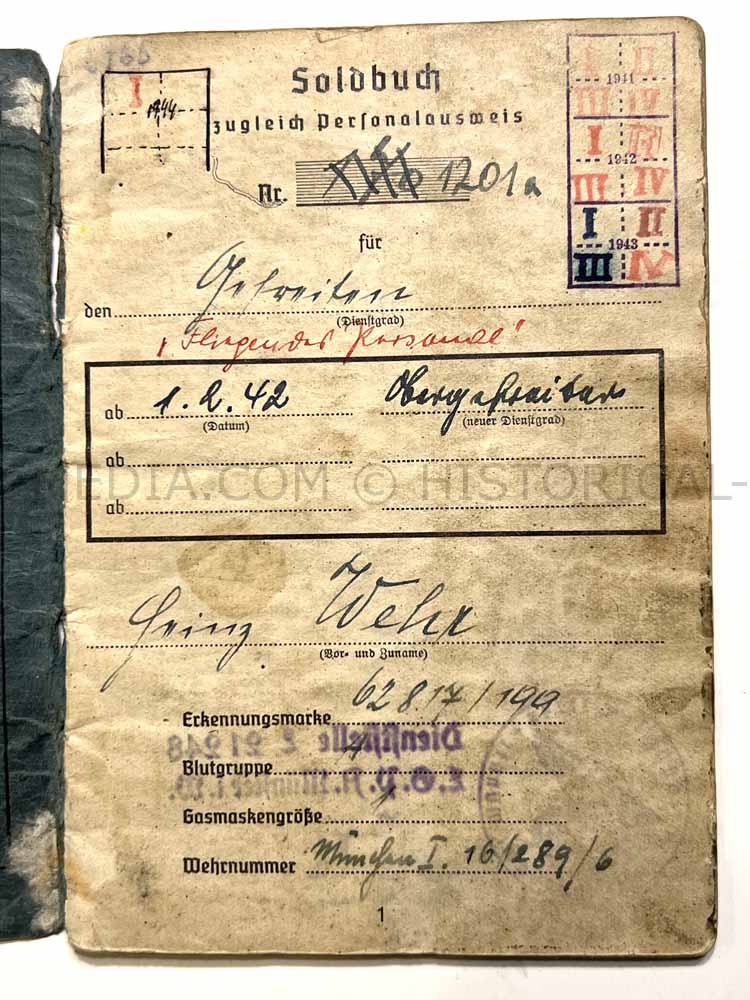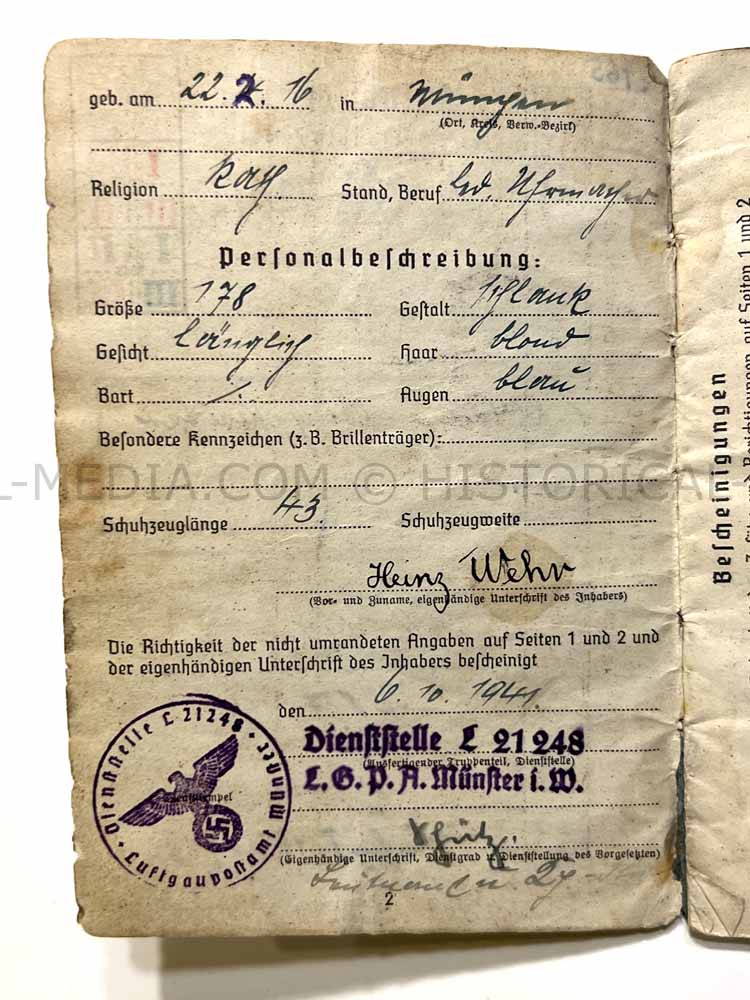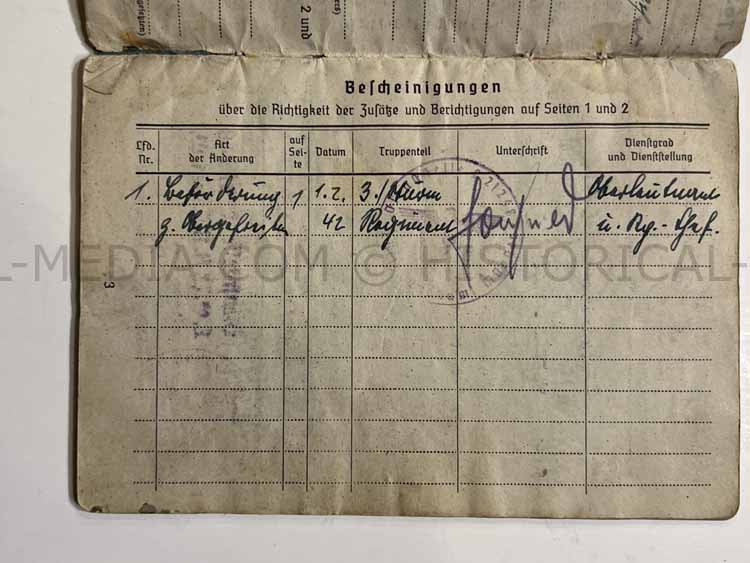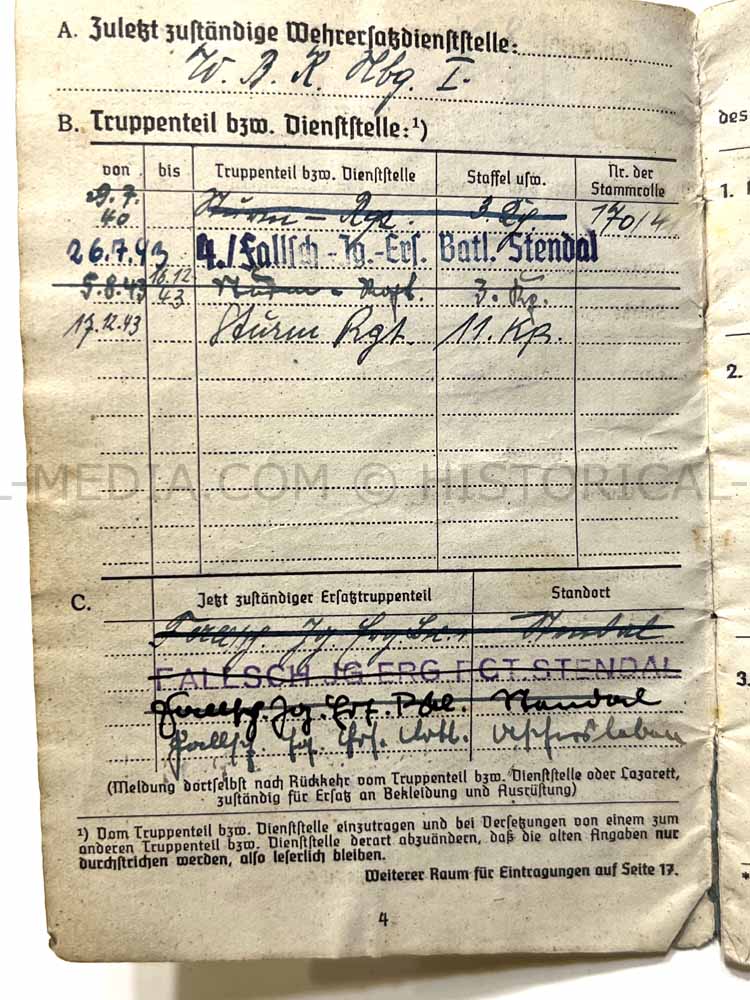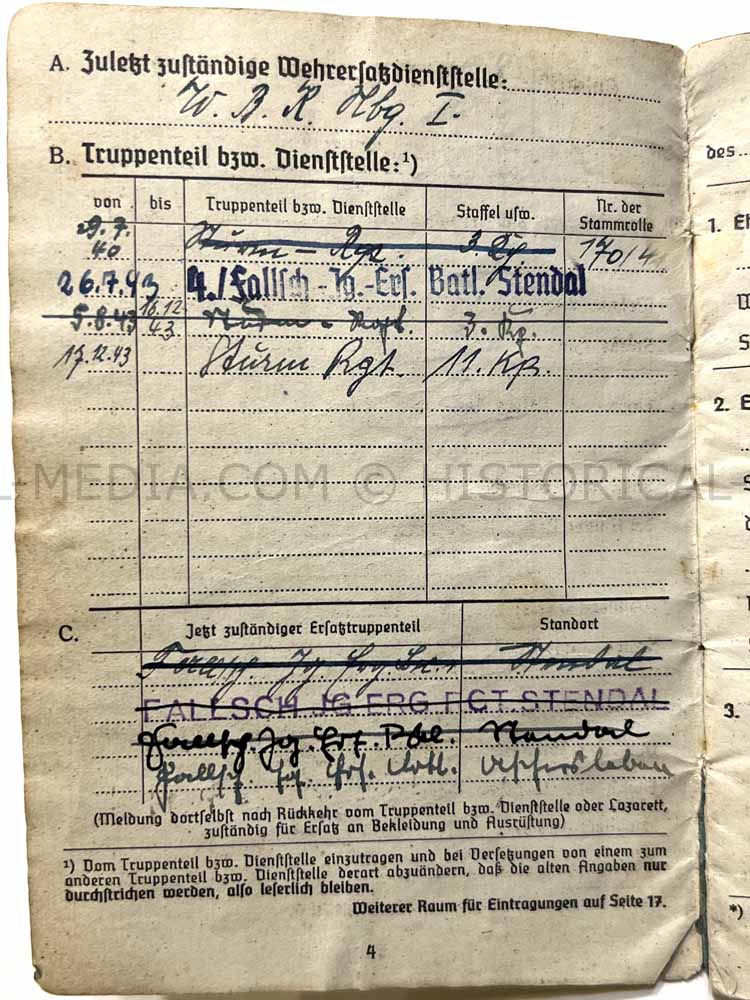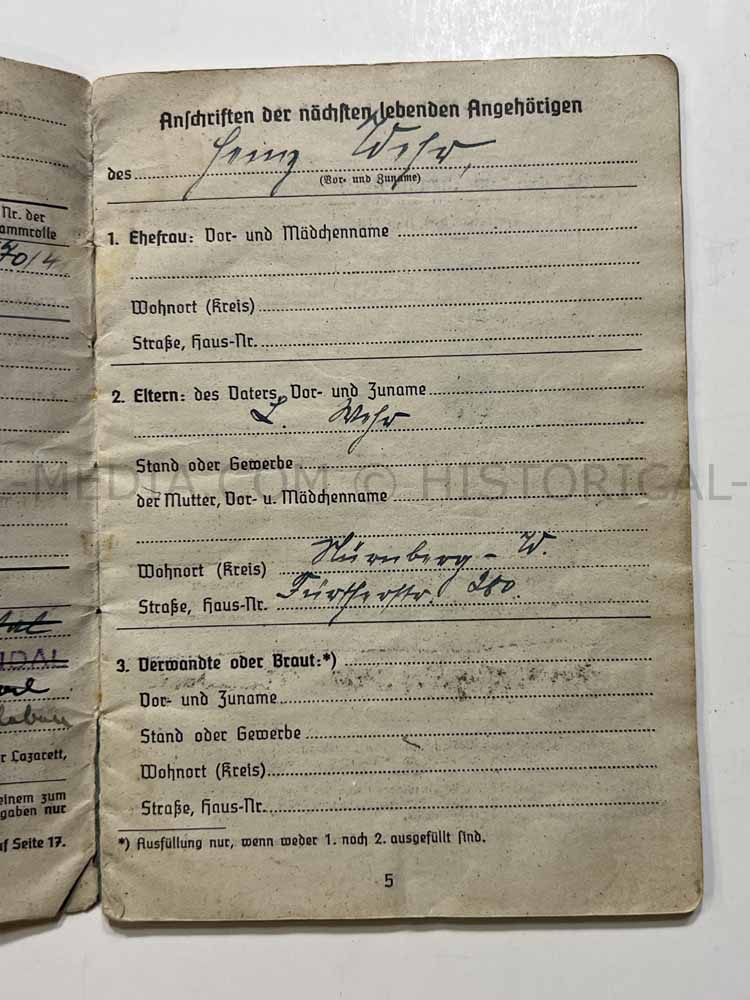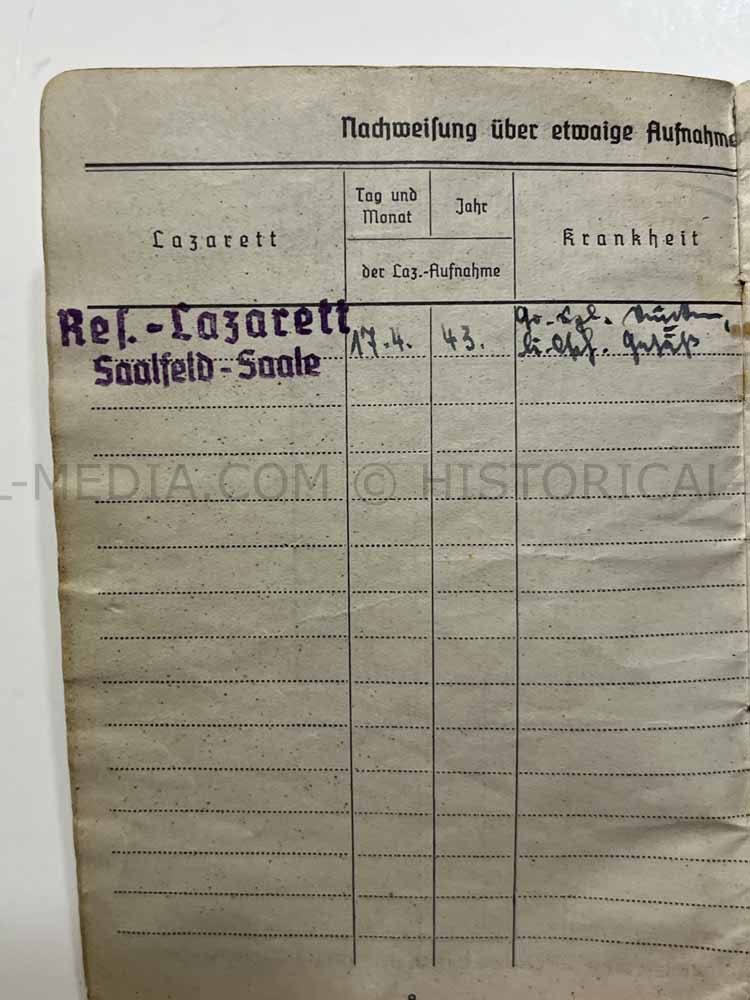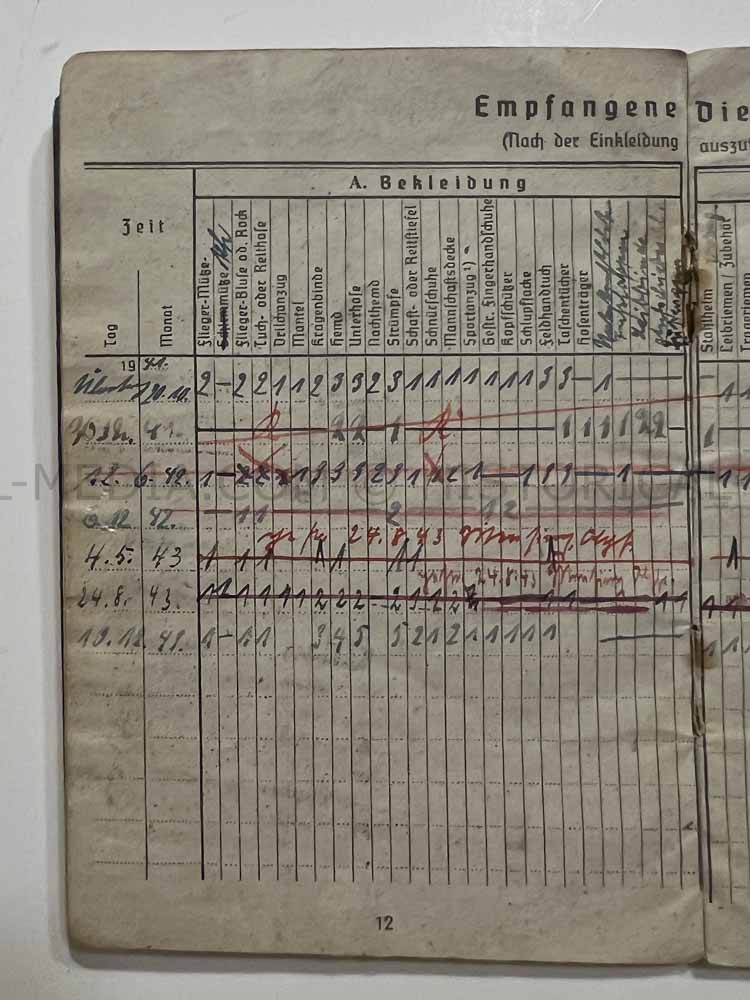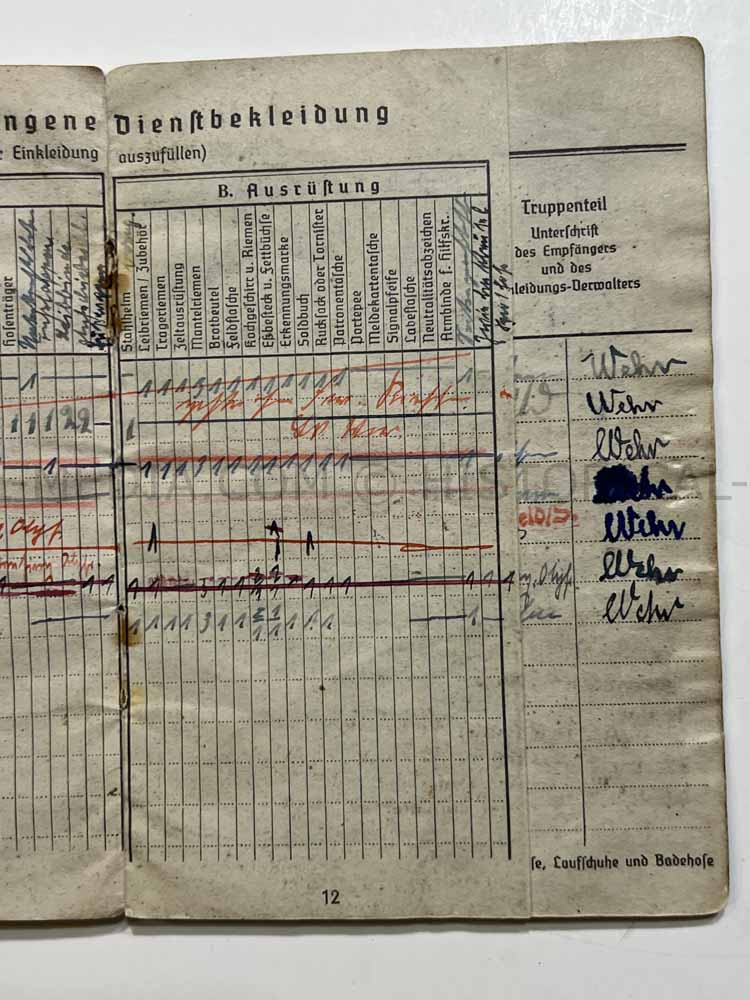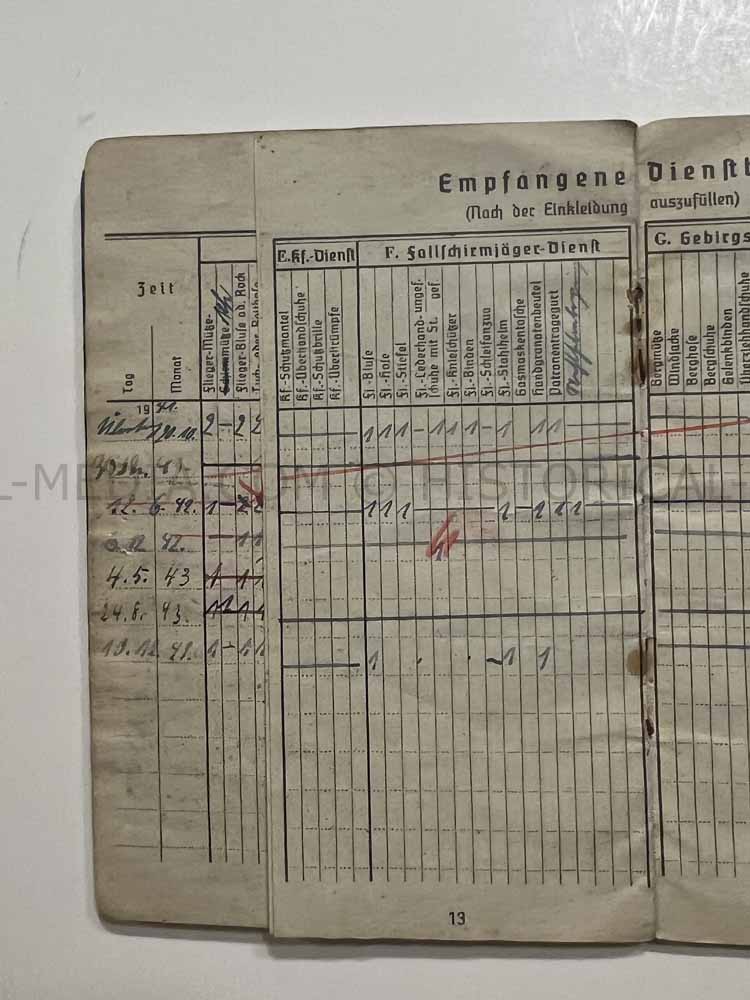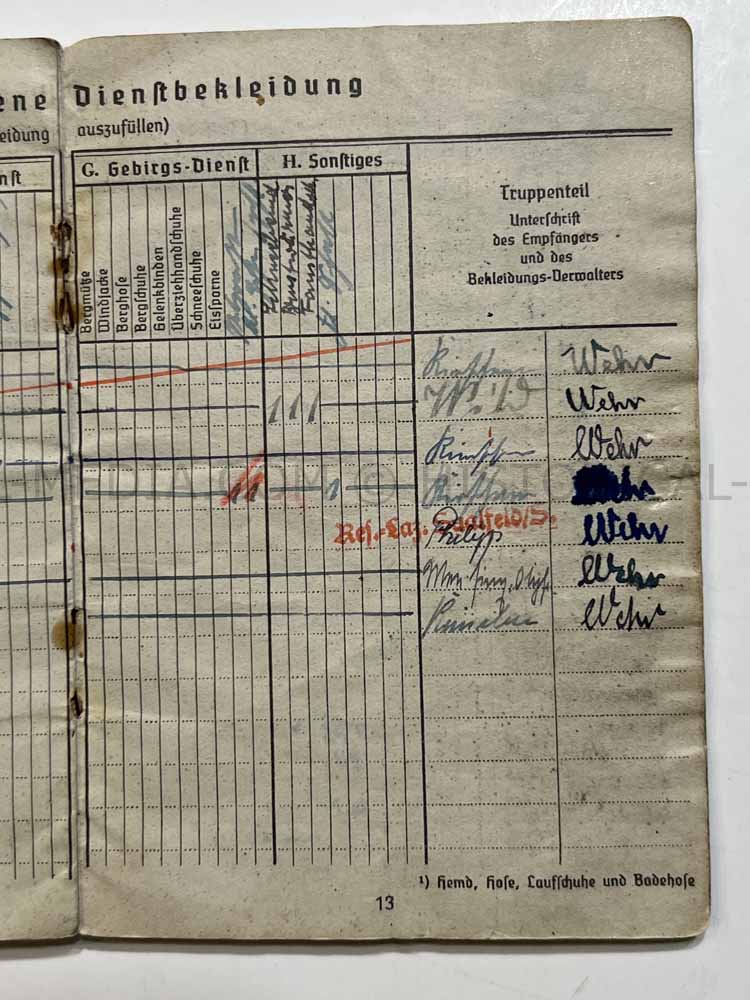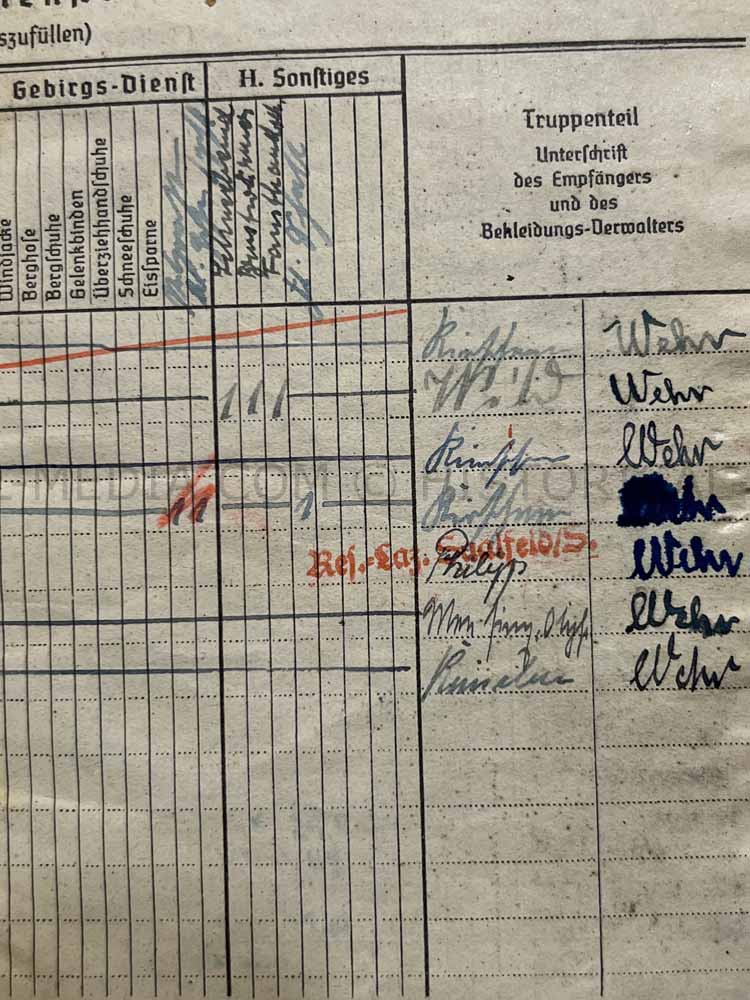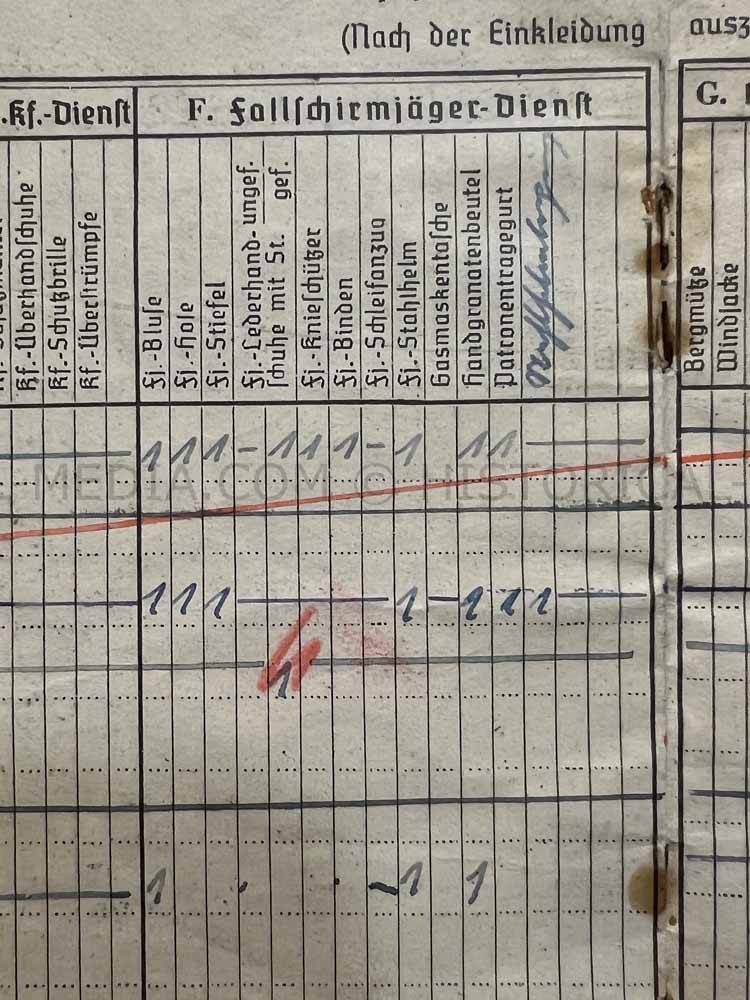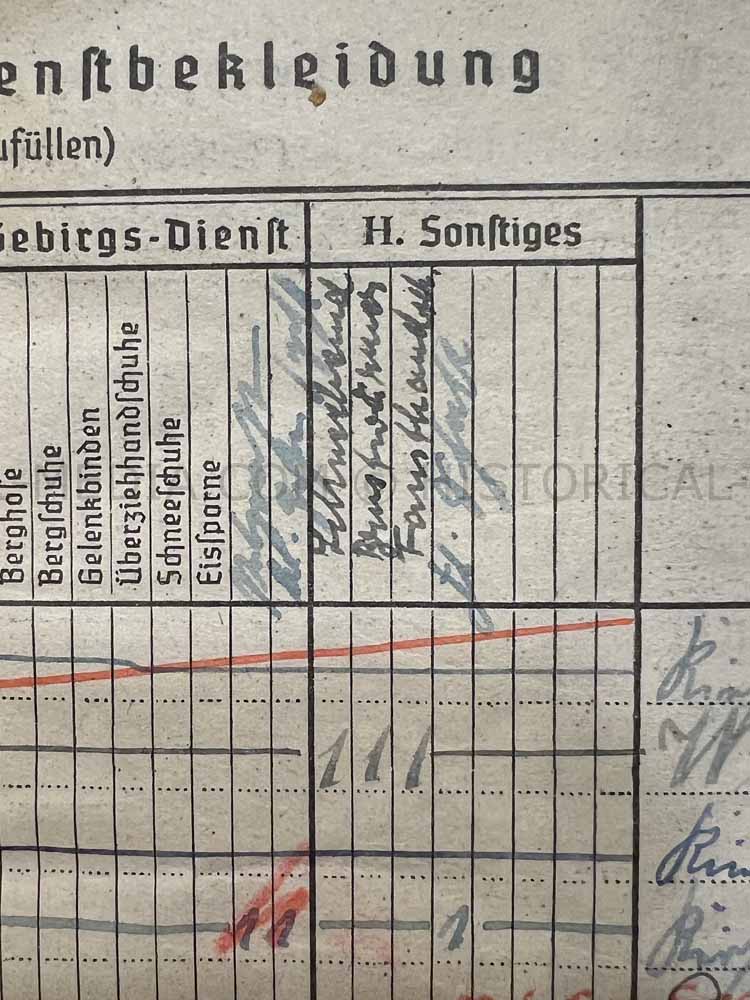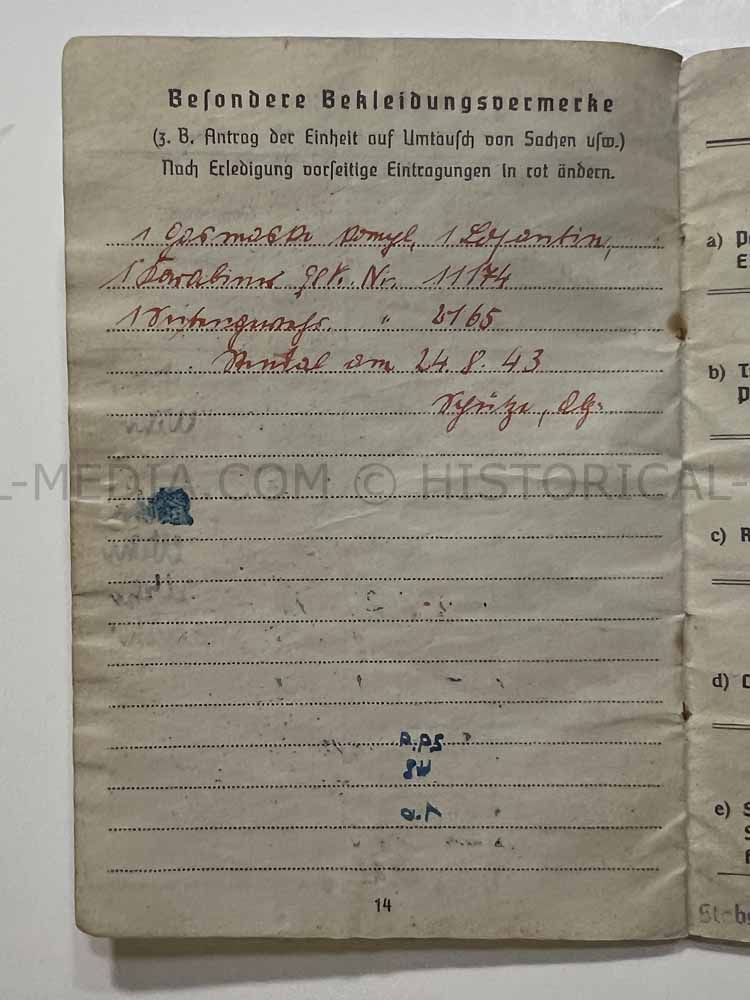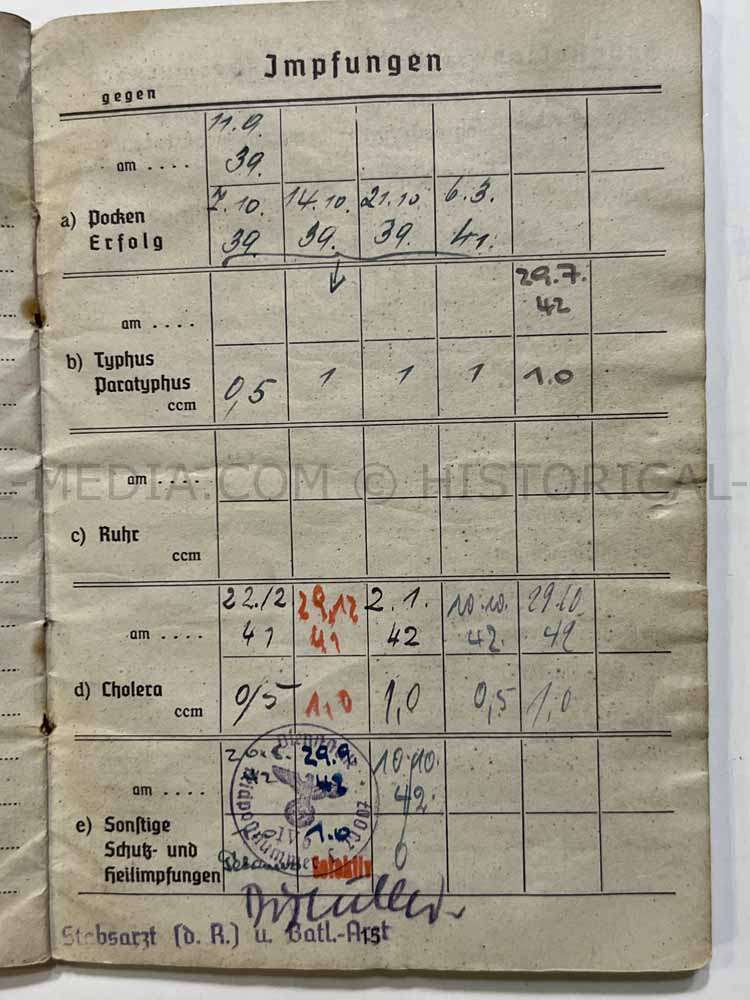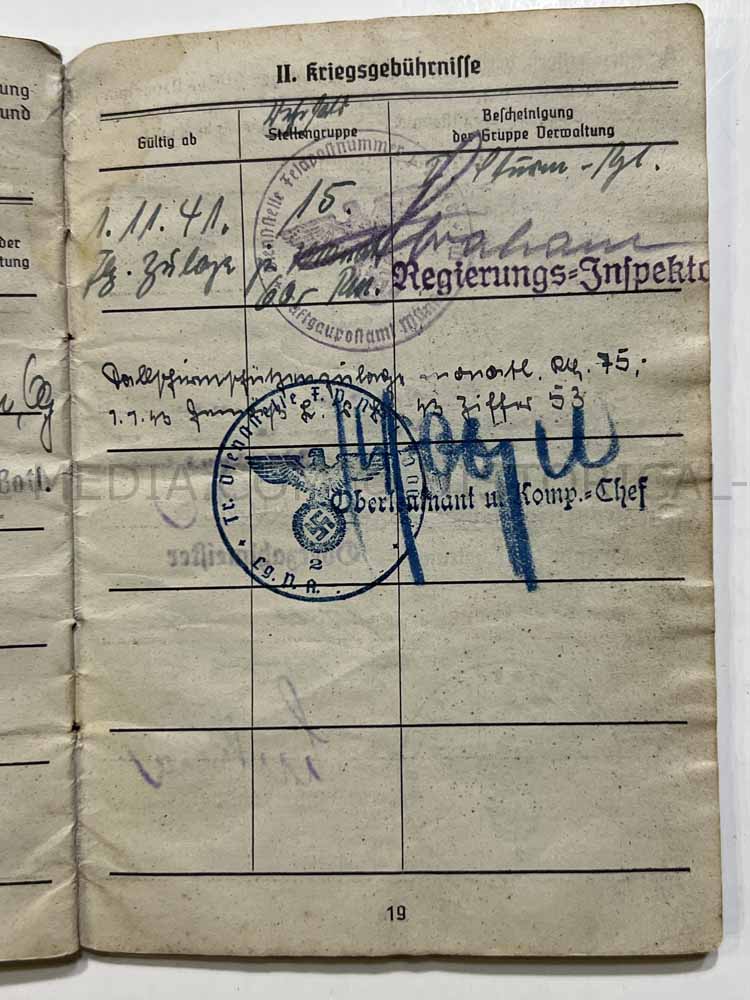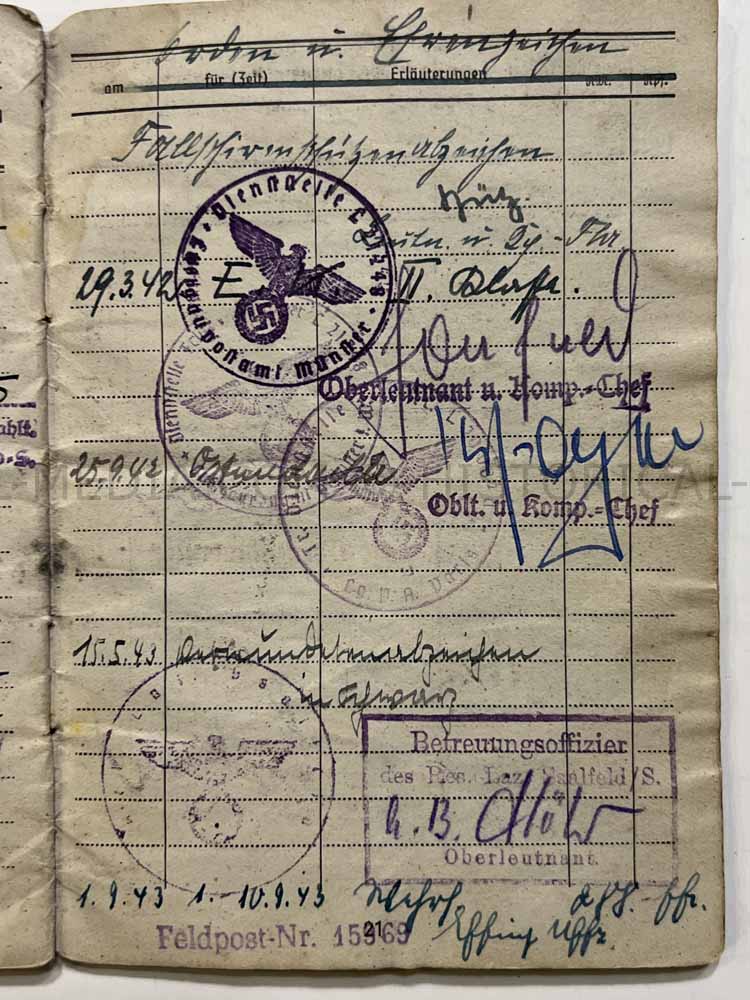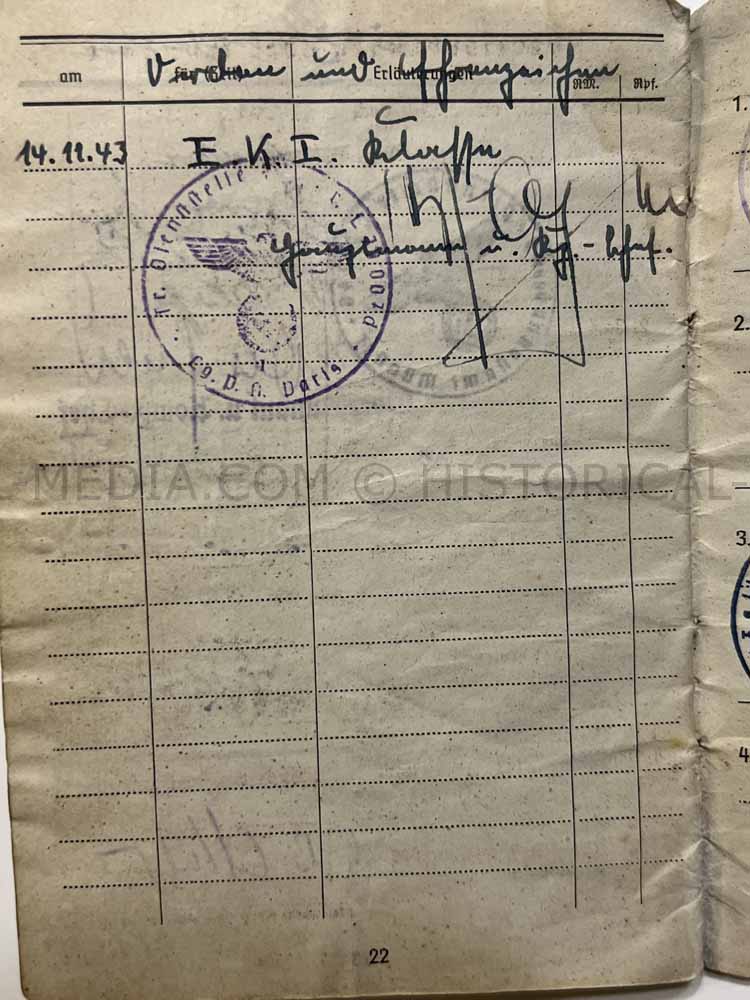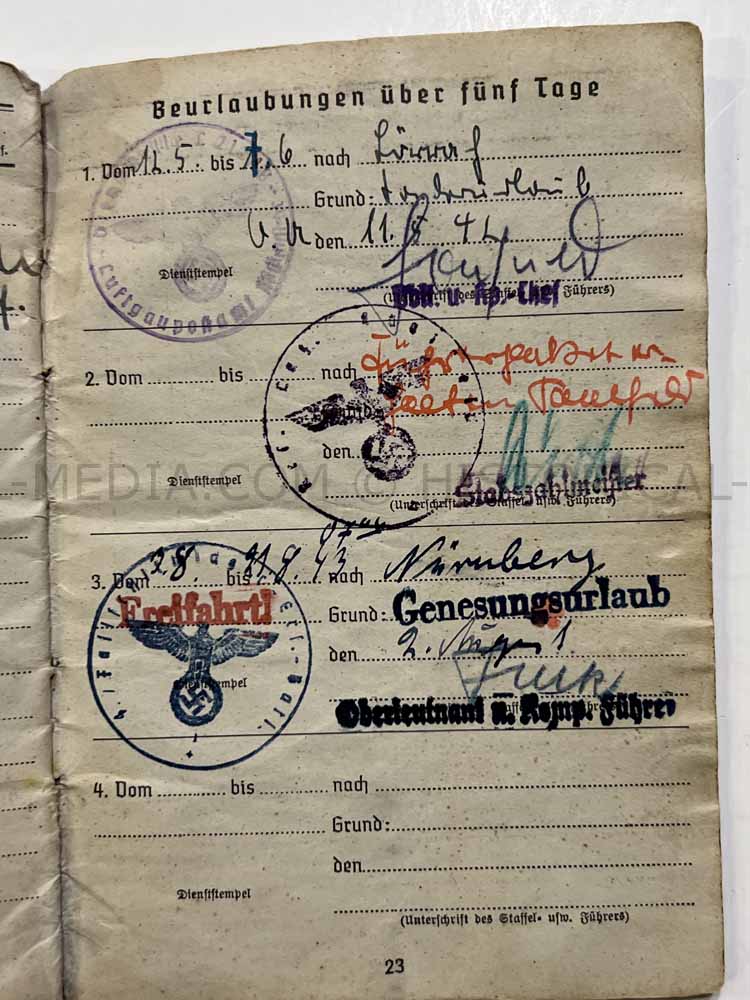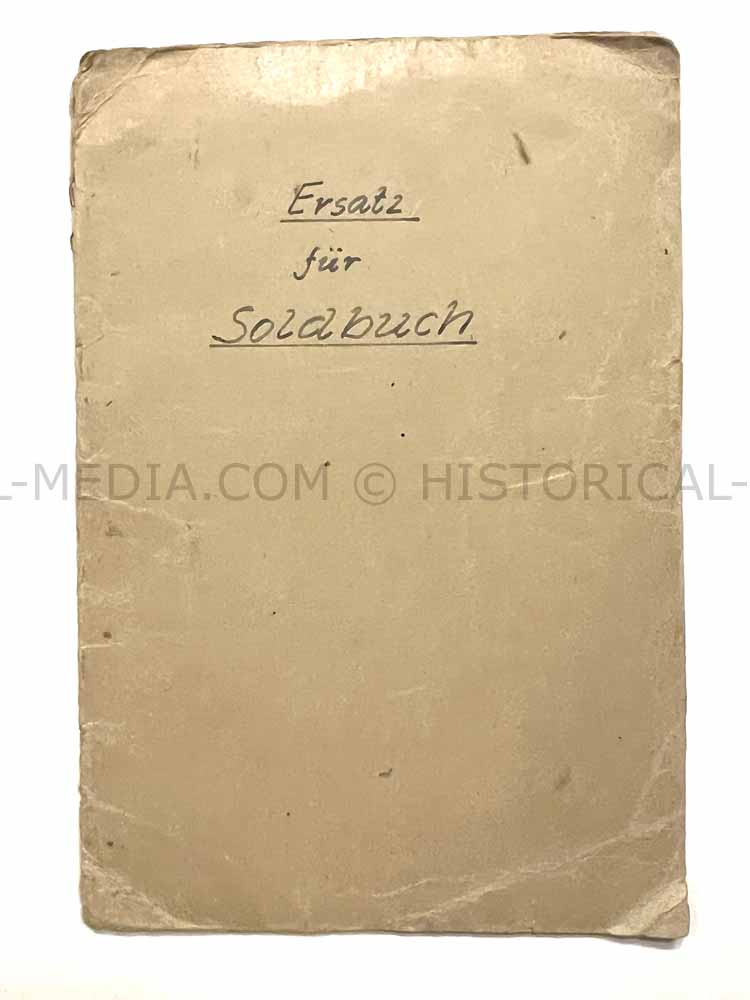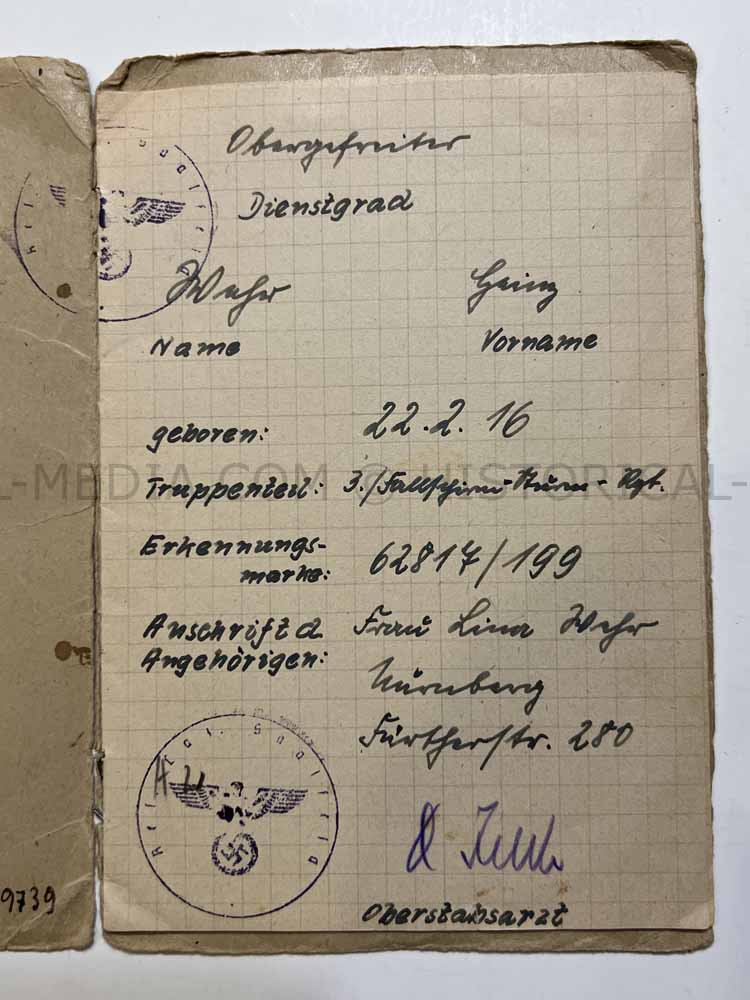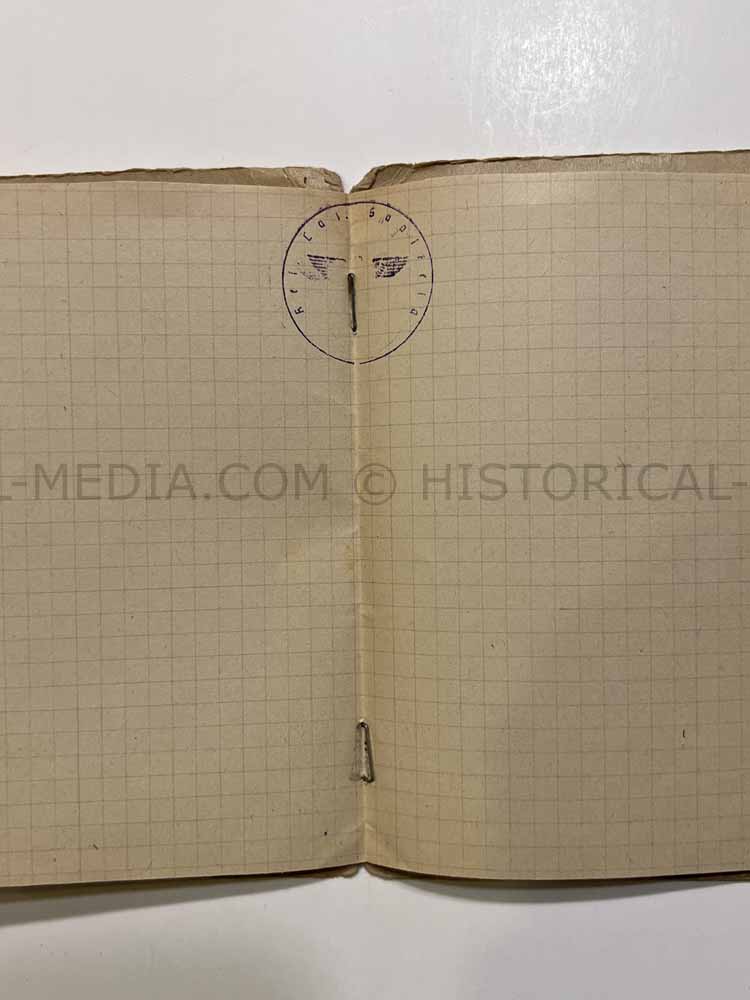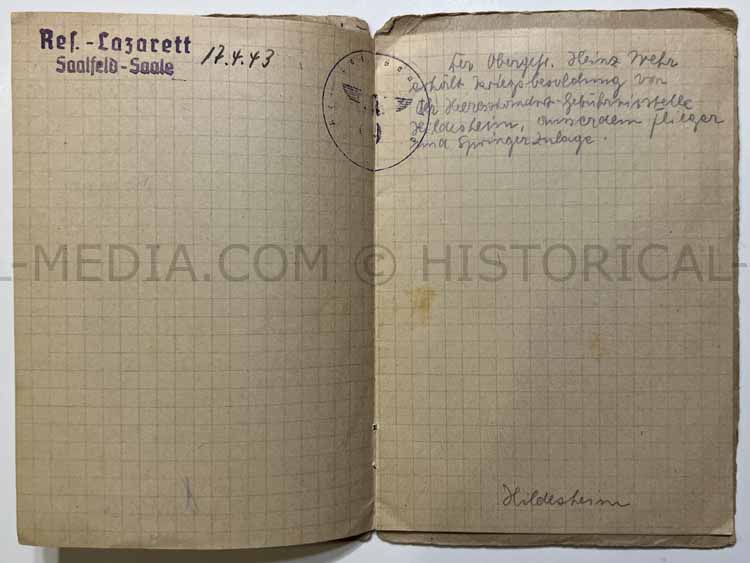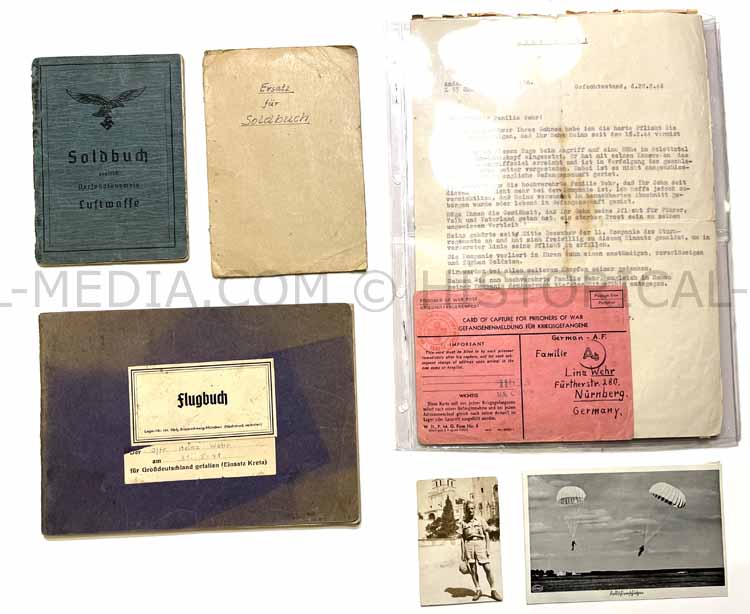
W. FALLSCHIRMJAEGER SOLDBUCH, FLUGBUCH, Photo & Document Grouping - STURM REGIMENT - Captured at ANZIO/NETTUNO!
Grouping too Obergef. Heinz WEHR who served in 3./Fallschirm-STURM-REGIMENT. Comes with his SOLDBUCH - original issue Oct. 6, 1941 with 3. Kompanie Luftlande-Sturm-Regiment 1. Other FP numbers for Stab I u. 1.-4. Kompanie Luftlande-Sturm-Regiment 1 present throughout. Great award entries - Fallschirmjaeger Badge, EK2, Ostmedaille, Black Wound Badge, EK2, and EK1. Several Kompanie commander signatures that need researching. Also comes with his "Ersatz Soldbuch" - basically a paper summary version he received in hospital. His FLUGBUCH listing all his qualification jumps for his FJ badge. On the cover is a very RARE pasted slip of paper indicating he was KIA on May 21, 1941 in KRETA - but he wasn't. He was MIA (Feb 16, 1944) during the fight against the Nettuno landings and ended up in POW camp. Comes with a letter to his family from his Kompanie commander indicating this. The Kompanie commander's FP number corresponds with FJR 12 which fits with I./Sturm Rgt's transfer to form the core of the regiment (see below). Comes withpostcard he sent home from POW camp, letter detailing how he was jumped by a group of Black US soldiers in 1947 while he was serving as a policeman.
$1850
The Fallschirmjäger-Regiment 12 was formed in November 1943 in the area between Perugia and Terni in Italy for the 4th Parachute Division. The I. Bat. des Luftlande-Sturm-Regiments of the XI. Fliegerkorps served as the core unit. Some of the regiment's soldiers came from the Italian divisions "Demgo" and "Folgore", which wanted to continue fighting on the fascist side even after the Italian capitulation. While the units were still being formed and brought together, a combat group of the division was formed and kept ready under Major Gericke on January 20, 1944, in view of a possible Allied landing on the coast of the Tyrrhenian Sea. The combat group consisted of a battalion of the 11th Parachute Regiment and the II. / 12th Parachute Regiment. On January 22, 1944, the expected landing of Allied units in the Anzio / Nettuno area south of Rome began in the security sector of the I. Parachute Corps. The "Gericke" combat group was the first unit that was immediately available and was able to fight the landed forces as early as January 22, 1944. By the afternoon, the "Gericke" combat group, which had now been reinforced by army units, had laid a loose ring of encirclement around the landing forces that were only hesitantly advancing north towards the Alban Hills and the Italian capital. In the evening, the positions were reinforced by the deployment of the 3rd Panzergrenadier Division, to which the "Gericke" combat group was now subordinated. In the next few days, all American attacks were repelled. By the end of January 1944, further units of the 4th Parachute Division, which had been deployed south of Perugia, were assigned to the defensive front around Anzio/Nettuno. These included the 1st and 3rd Battalions of the 12th Parachute Regiment, which were initially moved to the area around Ostia, west of Rome, for final deployment and then inserted into the encirclement front. From the beginning of February 1944, the 4th Parachute Division fought off several attempts by the landing forces to break out of the encirclement ring. In a series of counterattacks at the end of the month and in March and early April 1944, the division attempted to push back the beachhead in its sector.
https://digital-commons.usnwc.edu/cgi/viewcontent.cgi?article=1353&context=nwc-review
On 9 February, Mackensen ordered a second major attack (Operation FISCHFANG), aimed to break through the enemy’s main defense line, split VI Corps in
two, drive to Nettuno and Anzio, and destroy the divided enemy force.294 The
attack started on 16 February but was repulsed with heavy losses, achieving only
minor penetrations


